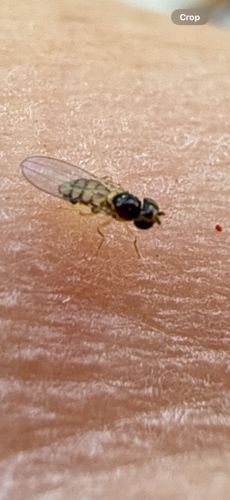Fungus Gnat
Scientific Name: Bradysia spp. (though exact species can be hard to determine from image alone)
Order & Family: Diptera (Flies), Sciaridae (Dark-winged fungus gnats) or Mycetophilidae (Fungus gnats)
Size: 2-8 mm (adults)

Natural Habitat
Damp, organic-rich environments, often associated with potted plants, decaying vegetation, and moist soil. They are attracted to indoor plants with overwatered soil.
Diet & Feeding
Larvae feed on fungi, decaying organic matter, and plant roots (especially fine root hairs). Adult fungus gnats do not feed significantly and are short-lived.
Behavior Patterns
Adults are weak fliers and often seen flying around potted plants or crawling on soil. Larvae develop in moist soil. They have a short life cycle (around 3-4 weeks) and can reproduce rapidly in favorable conditions.
Risks & Benefits
Risks: Larvae can damage roots of seedlings and young plants, especially in greenhouses or potted plants, leading to wilting or stunted growth. They are primarily a nuisance pest in homes. Benefits: They play a role in decomposition of organic matter in natural environments.
Identified on: 10/17/2025